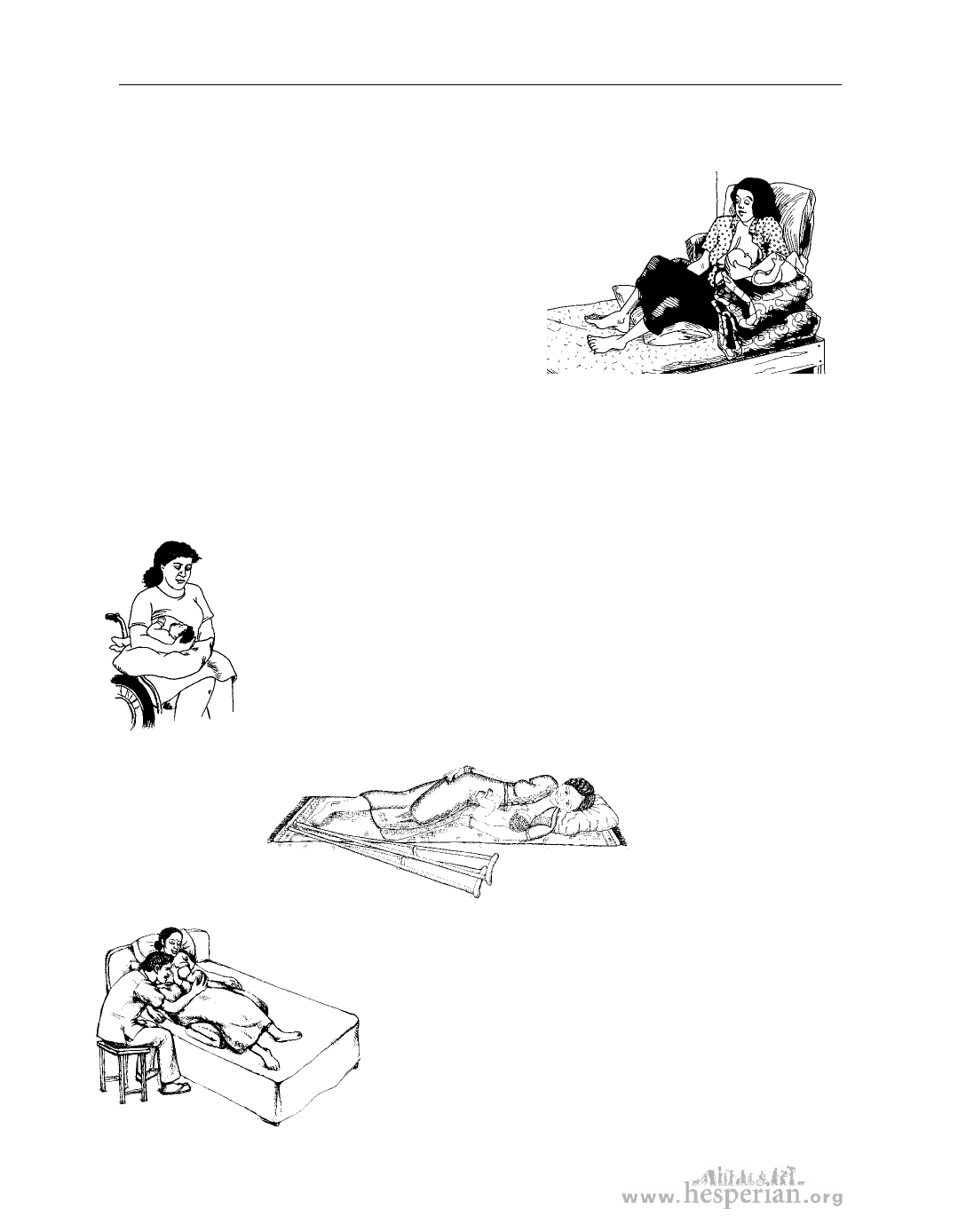
256 chapter 12: Caring for your baby
How to hold the baby
Breastfeeding can be painful at first. But if the baby is in the right
position, you will get used to the baby’s sucking and the pain
should go away. If it does not, try changing your position
or the baby’s position. Make sure the baby has a good
mouthful of the breast. If breastfeeding is still
painful, talk with a health worker. There could
be another problem.
Most women learn to breastfeed their
babies by watching other women in the family
and community. If another woman in the
community has your disability and is already
a mother, ask her for advice.
Many disabled women can breastfeed their
babies if they find a comfortable position.
Some women find breastfeeding easier if they
sit in a chair or bed where they can lean back
a little and also support their arms. It also
helps to rest your feet on something. Make
sure the baby is well supported too.
If you have good use of your arms and upper body, you should
be able to breastfeed the baby with no problems. Make sure the
baby, especially the baby’s head, is well supported and that you sit or
lie in a position that is comfortable for you.
Use pillows or
some rolled-up
cloth under the
baby.
If you have limited use of your arms and upper body, try
to find at least one comfortable position for breastfeeding. Ask
someone to help you if necessary. Here are some suggestions:
Many women find it
easier to lie on their sides
with their babies beside
them supported by
pillows or rolled-up cloth.
If you cannot use your arms and upper body,
you can breastfeed with help from family members
or friends. Explain to them how to position the baby
so that you can breastfeed. If necessary, ask them to
hold the baby in position, especially the baby’s head.
Even though you are not holding the baby in your
arms, the baby will still be able to see your face and
feel the warmth and familiar smell of your body.
A Health Handbook for Women with Disabilities 2007